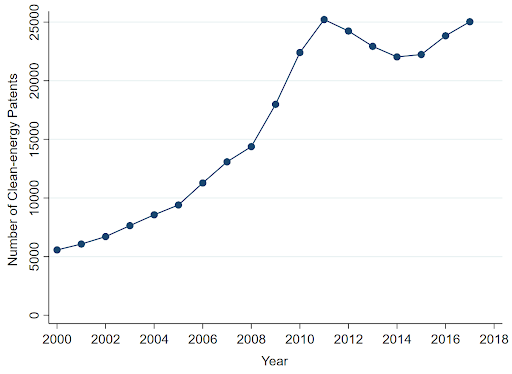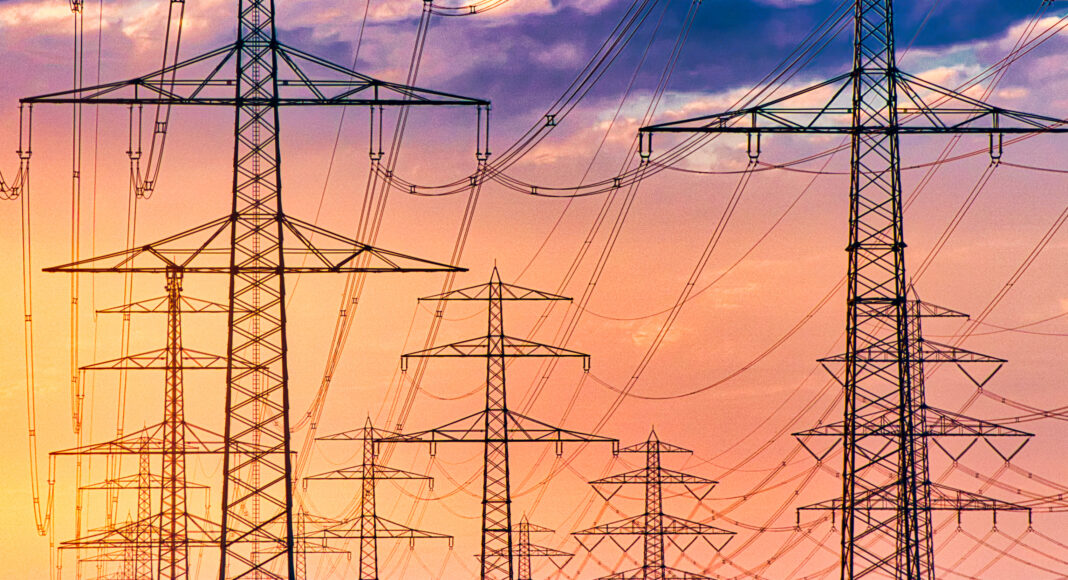In new research, Matteo Romagnoli argues that for the electricity sector to decarbonize as part of the broader green transition, regulators must liberalize markets and encourage competition to encourage the production and adoption of new technologies.
According to the International Energy Agency’s World Energy Outlook 2022 , global demand for electricity could rise by 7,000 terawatt hours by 2030. This increase would be equivalent to the current demand in the United States and the European Union combined. To meet this additional demand in a sustainable way, we need to radically change the way we generate and supply electricity: a task that will inevitably require the development of new clean energy technologies. Fortunately, these technologies are already being developed.
Unfortunately, some specificities of the electricity sector hinder the rapid development of clean-energy technology in favor of a more incremental approach to innovation. The electricity market relies on capital-intensive infrastructures, and the significant investment required to build these infrastructures might make some market participants unwilling or unable to switch their core generation paradigm as radically new technologies emerge. In addition, the many technical components of the electricity grid must work together in a complex and integrated system, so any new technological solutions must be able to function in this broader system. These factors, among others, help to explain why radical innovations that significantly disrupt the status quo can have a hard time gaining a foothold in the electricity market.
To encourage the electricity sector to develop and adopt these new technologies, policymakers need to identify the right incentives to overcome innovative inertia. In my research, I study if liberalization of the electricity sector, namely the breakup of monopolies and introduction of competition, can induce these incentives, thus fostering the development and deployment of more radical clean-energy technologies.
The academic literature studying the relationship between regulation and innovation in the electricity sector has already established that liberalization of the electricity market was instrumental to the increase in clean-energy patents observed over the last 30 years (see Figure 1).

To understand if further liberalization can promote the development of more radical clean-energy technology (a related but different question), I examined how deregulation of the electricity market affects the search space of clean-energy patents. The search space is the set of knowledge inputs and sources used to develop an invention (e.g. older patents, academic literature, databases etc.).
The radicalness, originality, and novelty of a patent are known to be linked to the characteristics of its underlying search space. A diverse search space uses knowledge from a variety of fields, enabling the patents’ innovators to build on different strands of knowledge and harness technological spillovers from other fields. On the other hand, a narrow search space is characterized by knowledge inputs from few technological fields and is associated with the development of incremental innovations. As the IEA has noted, leveraging knowledge accumulated in other technological fields can lead to significant benefits for clean-energy technologies, while at the same time reducing the need for additional research and development spending. For instance, knowledge spillovers from the production of silicon for microprocessors have played an important role in the development of solar PV panels. Similarly, petrochemical companies first accomplished the development of the carbon anode now used in lithium-ion batteries.
The liberalization of the electricity market theoretically affects the search space of clean energy technologies because electric utilities in regulated markets that curtail competition otherwise have little incentive to develop radical clean-energy technologies that are far from their knowledge base and could threaten their existing assets. Conversely, they’ll prefer to decarbonize energy supply with incremental innovations that are more compatible with their existing asset base and therefore are less costly for them to develop and adopt. The liberalization of the electricity market can help to break this path dependency by allowing new players to enter the market who are not tied to the incumbents’ core competence and generation paradigm. This may ultimately favor a broader approach to R&D, widening the search space of clean-energy patents and leading to more radical clean-energy innovations.
Figure 2 provides descriptive evidence in favor of this hypothesis. First, the figure shows the average of the OECD indicator of Product Market Regulation in the electricity sector in almost all OECD countries. This indicator measures the degree of regulation in the electricity sector, with higher values indicating a more regulated market. Second, the figure also plots the average value of the so-called Radicalness Index for clean-energy patents developed in the same group of OECD countries. This index, also computed by the OECD, measures the extent to which a patent uses knowledge from “outside” technological fields. It is calculated at the patent level and can take values between zero and one, with higher values signaling that the patent uses more knowledge from outside technological fields.
Figure 2 suggests the existence of a negative relationship between electricity regulation and the extent to which clean-energy technologies cite knowledge from outside technological fields. As the electricity markets of OECD countries become more liberalized, the average value of the Radicalness Index for clean-energy technologies developed in countries increases substantially. In addition, once electricity liberalization slows down, the Radicalness Index also stops growing.
However, there may have been other factors that contributed to the development of clean-energy technologies alongside liberalization as seen in Figure 2. To this end, I used data on patent applications filed over the period 1990-2017 and relied on an instrumental variable approach to isolate the impact of liberalization on innovation from other possible factors. In the end, I found that what we observe is indeed a causal relationship: liberalization of the electricity market leads to clean-energy patents that cite more from outside technological fields, i.e. clean-energy patents that harness more knowledge spillovers from other technological fields.
It is critical that policymakers understand how electricity regulation can contribute to the development of better clean-energy innovations. Changes to the design and regulation of the electricity sector are currently being discussed in many markets around the world. However, some of the ideas proposed and discussed have the potential to significantly hinder competition in the market. (For a discussion on this topic focused on the European Union, see ACER 2022). In turn, reduced competition threatens innovators’ incentives to broaden patent search spaces to produce the radical technologies necessary for decarbonizing electrical generation.
Stressing the importance of a competitive electricity market for clean-energy innovation does not mean ignoring the key role that the state should play in this market and in supporting clean-energy technologies. In fact, in a liberalized electricity market, environmental policies become even more important, as it has been shown that these policies are more effective once the electricity market is opened to competition. Moreover, while the role of the regulator changes in the transition from a monopoly to a competitive electricity market, it does not become marginal. A well-functioning electricity market is a prerequisite for incentivizing investments in electricity supply, and this cannot be achieved without a regulator to oversee transactions in the market and ensure that the market functions effectively. Finally, even in a liberalized electricity market, public R&D is an important lever for technological progress, as the case of the French Alternative Energies and Atomic Energy Commission shows.
Liberalization of the electricity market is therefore an important piece of the puzzle to decarbonize electricity supply, but it remains only a single piece of the border puzzle that we need to solve.
Articles represent the opinions of their writers, not necessarily those of the University of Chicago, the Booth School of Business, or its faculty.






